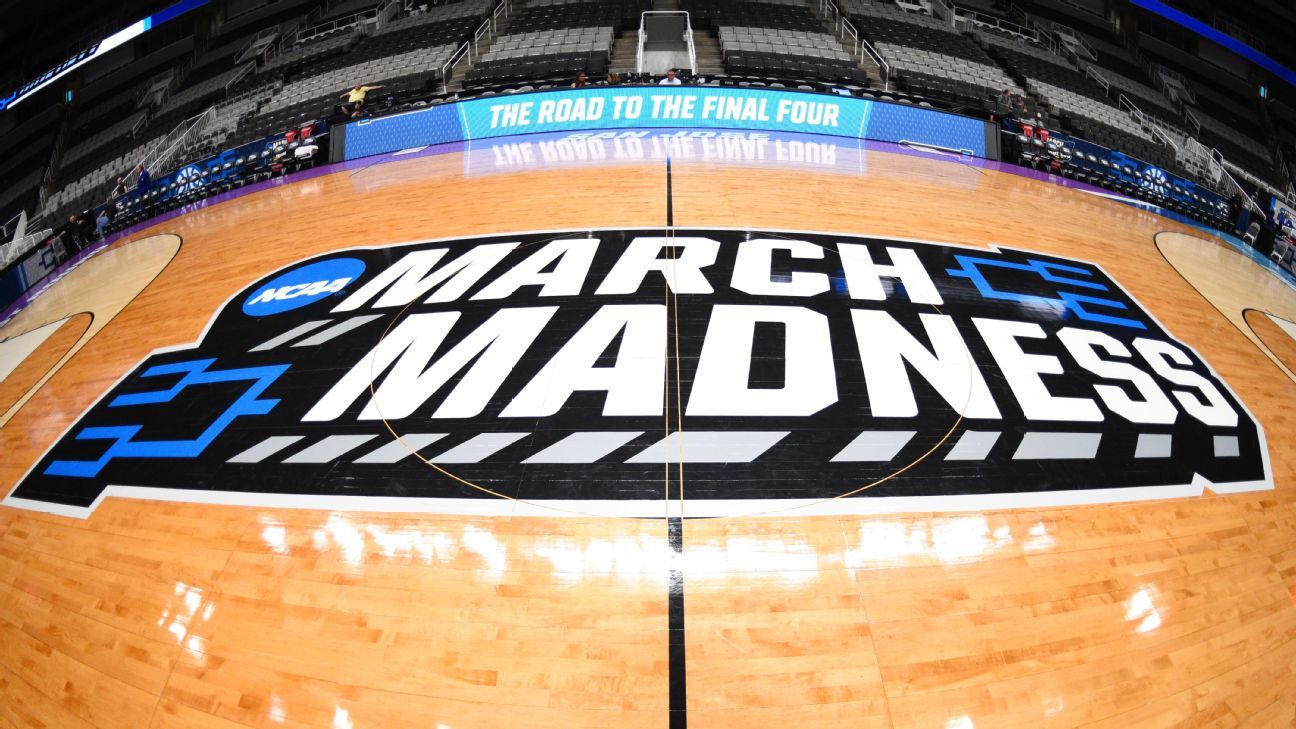That the game would ultimately arrive at the finish line — the NCAA Bubble Tournament in Indianapolis — was never truly in doubt. The only question was how many hoops would the game have to jump through — and at what cost.
Now, the NCAA Tournament Bubble Selection Committee will take over and make judgments on the vastly different résumés put before it. Of course, we will all blather that this is the most difficult task in tournament history. Everyone will talk about eye tests and metrics. We will discuss our “Quads” more than The Rock does.
All of our arguments will be meaningless.
Selection will be the same as always — three teams for one spot. Seeding will be as always, subject to the makeup of the committee. Some committees do it better than others. And, lastly, this will be exactly the same: the NCAA tournament, whether in a bubble or eight different sites, is idiot-proof. It can be impacted by bad decisions, but it will never be diminished by them.
The NCAA tournament is as fair as any championship event can be. Every single team has a chance to compete against its peers, teams it has chosen to be with in a league, to gain access to the tournament through winning the league’s automatic bid. And, for the best teams after the automatic bids are determined, your team can gain entry by establishing your team among that group This year, there is an additional spot in the at-large pool because the Ivy League opted out.
Football has a cutoff point of No. 5 to get into the title tourney. Basketball has two doors of entry into the title tourney: the automatic bid door and the at-large door. That is beyond fair.
The problem lies in the perception that the “little guy” doesn’t get as many opportunities for high-value wins, especially at the end of the season. That perception is true. The playing field is not level — and with 350-plus teams, how could it be? The most galling part of the year for the “little guy” is this week — Champ Week — a time when the bottom drops out for most “little guys,” while the Power 5 teams all gather together to allow each other a bunch of high-value, neutral-court opportunities to separate from the unwashed masses after somewhat mediocre regular-season results.
The Bilas Index was born out of an idea for the selection committee and the selection and seeding process, and to bring more value and importance to the regular season. It is a great exercise to rank the teams from 1 to 68 during the regular season and to use such an index as your “at-large” pool. I believe Selection Sunday should be at the end of the regular season, not at the end of Champ Week.
Here is The Bilas Plan, which includes use of The Bilas Index:
This year, on Sunday, March 7, the selection committee meets and puts out its “At-Large Seed List.” The committee ranks eligible teams from 1 to 68. That is the final, at-large pool, in order, based upon the regular season. Then, the conference tournaments are for the determination of the automatic bids only. Duke cannot pad its résumé with a run in the ACC tournament. Michigan State cannot put another couple of scoops on its sundae.
All either can do is win the automatic bid. That’s it. The regular-season hay is in the barn. Voila! The regular season has its rightful importance, and the “little guy” has a better chance. Plus, the fan gets two Sundays of enjoyment: the 68 team “At-Large Seed List” and then the full bracket one Sunday later. In between, the bottom teams of the “At-Large Seed List” are knocked off, one at a time, as automatic bids are won. You’re welcome, America.
Now, here is my “At-Large Seed List” based upon the regular season. It is also known as The Bilas Index. You’re welcome again, America.

1. Gonzaga Bulldogs
Three players among the Wooden Award finalists. Zero losses. Spectacular performances throughout the season. This is the best offensive team in the country, and one of the best passing, cutting and shooting teams I can remember. Why? The Zags get layups. Corey Kispert is the Zags’ only knockdown shooter; oh, and he is the best jump shooter in America. Other guys can hit from deep, but that won’t kill you. What kills you are the lay-ups. Some are off of defense and the break, but most are off of great reads, cuts, drives, post-ups and passes. Beautiful basketball. Can Gonzaga be beaten? Yes. But, it will take one hell of an effort to do it.
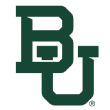
2. Baylor Bears
The first two games off the long pause had impostors in Baylor uniforms. After getting legs and lungs back toward normal, games against West Virginia and Oklahoma State showed the Bears were almost back to near unbeatable. Of course, Baylor is beatable, but like with Gonzaga, it will take one hell of an effort. Jared Butler is having a first-team All-America season and should be Big 12 Player of the Year. There is not a better two-way star in the Big 12.
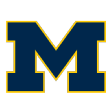
3. Michigan Wolverines
The loss to Illinois, without Ayo Dosunmu, was a stunner. That did not look like the Michigan team we had come to expect. But the Wolverines at their best are every bit as good as Baylor and Gonzaga. Length and skill at the wing, size at the rim and a steady point guard from Columbia in Mike Smith give Michigan all the tools at both ends of the floor.

4. Illinois Fighting Illini
There is a great vibe and spirit to the Illini. The performance against Michigan was beyond eye-opening; it was spellbinding and attention-getting. To play so strong on the road without Ayo Dosunmu was simply amazing. Andre Curbelo is a future star; he clearly takes a backseat to nobody. Add in Adam Miller and Trent Frazier and you have fabulous running mates for Dosunmu and Kofi Cockburn, the current stars. Illinois is a good bet to be among the ultimate four teams in the NCAA tournament.

5. Iowa Hawkeyes
Having CJ Fredrick back allows even more offensive efficiency to an already wonderful offensive team. Luka Garza will be the Wooden Award winner — and rightfully so. His productivity can seem almost boring in its consistency, but I still marvel at it. Plus, the Iowa defense has improved over the past few weeks. The Hawkeyes have become more difficult to score upon, and that is good news heading into the NCAA tournament. Iowa will be able to score on anyone, but if it can get more stops, the Hawkeyes can play in the Elite Eight or beyond.
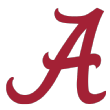
6. Alabama Crimson Tide
Don’t blink when Alabama has the ball, because it will be up toward the rim in a hurry. Also, focus your attention on the Tide’s defense. The SEC champs can really guard, and Alabama’s length and athleticism on the wings is impressive. Better still is the play of Herb Jones, a 6-foot-8 do-it-all forward who can rip-and-run, defend all five spots and fix any problem coach Nate Oats has on the floor. Alabama may be able to streak to a No. 1 seed as the Big Ten and Big 12 beat each other up.
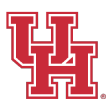
7. Houston Cougars
North Carolina is the best offensive rebounding team in the country, but Houston is right behind the Heels at No. 2 in corralling missed shots for easy second-chance opportunities. Justin Gorham is the best of the bunch, but he isn’t alone. Everyone crashes the glass, forcing opponents to box out at every spot, which limits transition opportunities. This isn’t just a defensive-minded team. Houston can efficiently manufacture scoring, off defense, the glass and in its offensive actions. Perhaps the best part of Houston’s season has been Quentin Grimes, who has hit almost 70 3-point field goals heading into the postseason. Grimes is not only playing well, he is playing at an All-American level, and playing with joy. He and Houston are fun to watch and have the chance to do something special in Indy.

8. Ohio State Buckeyes
The Buckeyes have dropped because the Big Ten is ridiculously difficult. Ohio State lost four in a row to Michigan, Michigan State, Iowa and Illinois. That is such a tough stretch, yet the losses have not diminished Ohio State’s chances of reaching the Final Four. Ohio State has one of the top five offenses in the country, with some matchup nightmares like E.J. Liddell, the only thing missing from a Final Four checklist being rim protection and size. The shootout against Michigan was evidence that Ohio State can beat anyone.

9. West Virginia Mountaineers
In the past several years, West Virginia was feared on the defensive end. Feared. Defense led to scoring opportunities and the Mountaineers could offensive rebound with anyone. But on the offensive end, there were struggles to make shots, which could be painful at times. This year, West Virginia has shot-makers at multiple positions — and it is damn fun to watch. So much so that Bob Huggins almost smiles during games. Huggs has Miles McBride, Taz Sherman and Sean McNeil to stretch the defense. The game is easier when it is not a crusade to score every time down the floor. Sure, West Virginia dropped a game to Oklahoma State at home, but that was more about the Cowboys being legit than major issues in Morgantown. I like this West Virginia team. Let them out of the Big 12 and the Mountaineers will seem even better.

10. Arkansas Razorbacks
The Razorbacks have won eight straight games and 10 out of their past 11. Damn, Arkansas is good. Don’t get stuck on the metrics with Arkansas. Remember, the metrics tell us what a team has done, but not necessarily what a team is capable of doing in the future. Arkansas is capable of better in the future. Moses Moody is a big-time player — and just a freshman. Moody can knock down deep shots and does a ton of damage from the foul line. He is one of the best and most prolific free throw shooters in the country.
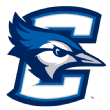
11. Creighton Bluejays
Who knows how the Blue Jays will process the statements and status of coach Greg McDermott. We have all had our say on the very important issues raised by his comments to his team and the resultant action and inaction by the university. On the floor, Creighton is the type of team that can do serious damage in the NCAA tournament. Creighton has a great point guard in Marcus Zegarowski, which is an imperative in March. Denzel Mahoney and Damien Jefferson are underrated role players who can defend and make plays, while Christian Bishop has emerged as far more than a lob threat. Bishop is a more complete player who can rebound and finish, shooting better than 70% from inside the arc. Mitch Ballock is one of the five best shooters in America. I really like this team.
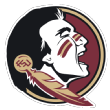
12. Florida State Seminoles
The Seminoles ran into an offensive buzz saw in South Bend, but that does not diminish the capabilities of this Florida State team. Two guys who will make a difference for Florida State are Anthony Polite and Sardaar Calhoun. Both can shoot it; Calhoun is an elite athlete. The only thing that will hold Florida State back is point guard play. Scottie Barnes is a 6-8, first-time point guard who has tremendous potential. But in the NCAA tournament, the youth and inexperience at the point could be an issue in a one-and-out scenario.
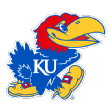
13. Kansas Jayhawks
I admire the way Kansas has gone about this season. Early, when David McCormack was developing but not yet producing, coach Bill Self was told going small was the key to the season. He was resolute. No, the Jayhawks can go small for a different look or for stretches, but Kansas needs to play with a presence in the middle. Well, the Jayhawks have one, as McCormack has been fantastic of late. He was the best player on the floor against Baylor, and he has been one of the best interior scorers in the country since February. But offensive prowess is not part of the Kansas portfolio. In fact, Kansas can labor to score at times. The Jayhawks win with defense. They are guarding pick-and-roll more effectively and efficiently. They have become more prideful and gritty on the defensive end. Self has done one of his best coaching jobs with this group.

14. Texas Longhorns
The Longhorns have lost seven games, almost all by razor-thin margins. I like Texas better than the metrics do, largely because of guard play and experience of climbing the ladder. Texas has three playmaking guards in Matt Coleman, Courtney Ramey and Andrew Jones. All can score, hit a game winner and put up 20 or more. The keys will be the play of Greg Brown, a talented wild card, and Jericho Sims. Sims is one of my favorite players to watch; he is so athletically gifted and bouncy. Sims can rebound, finish and protect the rim. If Brown and Sims can give the Longhorns consistent production in March, Texas can make a nice run. Shaka Smart has done it before.

15. Oklahoma Sooners
The Sooners have dropped four in a row but remain a difficult team to beat. All four losses came by 5 points or less, one of those in overtime. The loss to Kansas State started the slide. And that one was a bad loss. Still, Oklahoma is second-weekend capable, but so are 23 other teams. Umoja Gibson is the Sooners’ best shooter, but Austin Reaves is the best player. Reaves is playing the point; he is scoring and assisting at the highest level. Reaves transferred in from Wichita State, where he was labeled as a “shooter.” He is much more than that, and is making a great case for Big 12 Player of the Year. That will go to Jared Butler, but Reaves is first-team All-Big 12. Tremendous.

16. Texas Tech Red Raiders
The Red Raiders have suffered a few losses, but a pattern has emerged: You have to be pretty freakin’ good to beat Texas Tech and, even then, the Red Raiders are like kudzu … you can’t kill it. Every one of Texas Tech’s losses have been against NCAA tournament locks, and top 25 teams in The Bilas Index (Houston, Kansas, Baylor, West Virginia and Oklahoma State). Texas Tech has the chops and culture to play into the second weekend of the NCAA tournament.

17. Villanova Wildcats
Heartbreaking. That is the dominant feeling after watching Collin Gillespie go down with a season-ending knee injury. The All-Big East Gillespie is among the most respected in Big East history. He is the heart and soul of the Wildcats. Gillespie was not only the unquestioned leader and point guard, he was the best post-up player on the roster, making plays out of “back downs” like your dad used to use in the driveway when kicking your behind as a kid. Without Gillespie, Villanova’s prospects take a hit, as does the ranking here in The Bilas Index and in the selection committee Zoom. This issue is the truly difficult one for the committee: How do you factor in an injury of this magnitude when the résumé says No. 3 seed? It has been a while, but Cincinnati was the No. 1 team in the nation in 2000 when Kenyon Martin broke his leg in the Conference USA tournament. The Bearcats were not dropped down much and lost early.

18. Purdue Boilermakers
The Boilermakers have been getting consistently better, and there is nothing written in stone that teams cannot improve while playing in the postseason. They can, and Purdue can be one of them. Why? Matt Painter, that’s why. That dude can coach, and his mix of demanding and encouraging is a great one. Winners of five straight, and 11 of the past 14, Purdue is solid at both ends of the floor. It has perhaps the most underappreciated star in Trevion Williams, a 6-10 load inside who can post and get you second shots as one of the best offensive rebounders in the country. Plus, how many teams have a 7-4 rim protector like Zach Edey? Just one — Purdue.

19. Colorado Buffaloes
The metrics love Colorado, and so do I. With McKinley Wright IV, Evan Battey and Jeriah Horne, the Buffs have a great point guard, a talented big and an outstanding 3-point shooter. A key when playing Tad Boyle’s team? Don’t foul. Colorado is the best free throw shooting team in America, hitting more than 83% from the stripe.

20. USC Trojans
Aside from a couple of hiccups, the Trojans have been solid and improving throughout the season. Length and athleticism at the rim allows perimeter defenders to press up and crowd opposing perimeter scorers. USC’s defense is among the top 10 that I have seen this year. Tahj Eaddy Drew Peterson and Ethan Anderson are all good passers. Evan Mobley is an unselfish star who can make a difference in the NCAA tournament. USC is very capable but is also the type of team that can get bounced in the second round.

21. Virginia Cavaliers
“We are thankful for the lessons adversity teaches us.” That is what Tony Bennett said after Florida State administered a beatdown to the Cavs in Tallahassee. That loss turned into three straight. Yet, after losing three in a row, Virginia was still able to win the ACC regular-season title. Jay Huff and Sam Hauser have had excellent seasons. Kihei Clark has shown the ability to break down defenses and get into the paint to search for passing options. The best way to beat Virginia is to make it into one-on-one players, and make Clark finish at the rim rather than drive to pass. Still, it’s tough to beat the Cavs. That has been proved again this season.

22. Tennessee Volunteers
Want to predict what Tennessee will do in a given game? Flip a coin. The Vols are an outstanding defensive team but an enigmatic offensive team. Athletic, deep and hard-edged on the defensive end, Tennessee struggles to score on the offensive end. The Vols are capable of hitting shots, but horribly streaky. Victor Bailey and Santiago Vescovi are the only real “every game” deep threats, but freshmen Jaden Springer and Keon Johnson are spectacular talents who can take over, but not consistently. Tennessee can go deep — or go home.

23. Wisconsin Badgers
The Badgers had lost 7 of 11 heading into the game against Iowa to end the regular season. Wisconsin is really good, but it has been the difficulty of the Big Ten that seems to have been the issue — and the Badgers’ ability to bounce back after disappointment. In my view, it all started with the beating Wisconsin took at Michigan. It traumatized them. Still, while finishing plays has been an issue, Wisconsin will have new lease on life in the NCAA tournament. At 0-0, Wisconsin will not have to face a Big Ten team for a spell — it hopes.

24. San Diego State Aztecs
This is a terrific program. No matter the players that exit, the Aztec culture produces wins. Jordan Schakel and Terrell Gomez are the shooters, Matt Mitchell is the do-it-all wing. Nathan Mensah has been healthy, blocking shots and drawing fouls. Don’t be surprised to see San Diego State as a really tough out.

25. Loyola Chicago Ramblers
Another outstanding Loyola team, this one is really good defensively and has a fabulous college big guy in Cameron Krutwig. The harmonica-playing big man who will someday join me on Bald Men on Campus (we’re waiting for you, Cam! It’s a great brotherhood!) is one of the most productive players in Missouri Valley Conference history. Only Larry Bird, Oscar Robertson and Hersey Hawkins have matched Krutwig’s numbers. That’s beyond cool. Keep your eyes on Aher Uguak, a 6-7 wing who converts on 73% of his 2-point attempts.
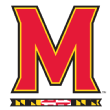
26. Maryland Terrapins
The formula for Maryland is pretty simple: When the Terps compete on defense — the “five-as-one” approach — and defend with intensity and concentration, they win. When they don’t jump to the ball, move as the ball moves, and help and recover — when they don’t compete together to get stop after stop — they get beat. There is no shot-blocker to protect the rim, so Maryland has to protect the lane. Maryland has tough-minded, versatile players. Bring that toughness, versatility and togetherness to Indy and I like Maryland’s chances. Look, Maryland started 10-10 and figured some things out. The losses to Northwestern and Penn State were good reminders of how far the Terps have come.

27. Oklahoma State Cowboys
Winning at West Virginia without Cade Cunningham? You have to be kidding. Mike Boynton is one fine coach, and he hits the right notes with everything. The Cowboys have some outstanding players behind Cunningham, especially Kalib Boone and Isaac Likekele. Boone is bouncy and can score with either hand around the goal. Likekele is one of the best rebounding guards and best leaders in the Big 12.

28. Virginia Tech Hokies
Nonbelievers in the Hokies need to put on the tape of Virginia Tech’s dominant performance against eventual ACC champ Virginia on Jan. 30. Tech defended really well in the 65-51 win but also shot 50% from the floor against the Cavs, which just isn’t done. Keve Aluma (15.9 PPG, 8.0 RPG) should be on your list of players who could have a national breakout in March.
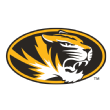
29. Missouri Tigers
Barring a significant run in the SEC tournament, Missouri is going to enter the NCAA tournament with as many question marks as any team in the field. The Tigers are just 2-5 over their past seven, including double-digit losses at Ole Miss and Georgia. This is a veteran group. Xavier Pinson, who has had shooting struggles lately, must find his rhythm.

30. St. Bonaventure Bonnies
Credit to the Bonnies for shaking off a potentially damaging home loss to Dayton in their regular-season finale. SBU has looked dominant in its first two Atlantic 10 tournament games, with juniors Osun Osunniyi (18 points, 14 rebounds, 6 assists against Duquesne) and Jalen Adaway (17 points, 7 rebounds) against Saint Louis leading the way.

31. UConn Huskies
The Huskies are the reverse of Villanova. UConn is better than its record due to the return of James Bouknight. That dude is a scoring machine, and the type of player who can carry a team to multiple NCAA wins.

32. Florida Gators
Florida has been up-and-down over the past month, but remember that this is a team that went into Morgantown and beat West Virginia on Jan. 30, so don’t count out the Gators on the national stage. Guard Tre Mann — who sat out UF’s loss to Tennessee on Sunday with migraines — has been really good all season and gives Mike White‘s team a shot against whomever it plays.

33. Oregon Ducks
The Ducks have spent most of the season just outside the national radar, yet played consistently enough down the stretch to earn the No. 1 seed in the Pac-12 tournament. Dana Altman has a bunch of good players but St. John’s transfer LJ Figueroa has been outstanding of late — he has made 21 of his 29 shots inside the arc over Oregon’s past four games (all wins).
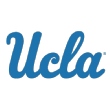
34. UCLA Bruins
UCLA has managed to tread water all season despite injury issues, but the Bruins’ current three-game losing streak raises questions about whether they’ve finally hit a wall. Chris Smith (knee) was lost for the season on New Year’s Eve and Jalen Hill and Johnny Juzang both missed Saturday’s loss to USC with injuries. Coach Mick Cronin will need a healthy group to survive and advance.

35. Michigan State Spartans
The Spartans have demonstrated a lot more confidence over their current 5-2 stretch. Aaron Henry has been really special of late, scoring but also taking the right shots and making the extra pass when needed. This is a team that is going to be much better than its NCAA tournament seed, rest assured.
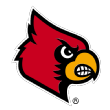
36. Louisville Cardinals
It’s been a bit of a mixed bag for Chris Mack’s group since it returned from a long COVID-19 pause on Feb. 20. The Cardinals are 2-2 since their return, with some good (a road win at Duke), some bad (a blowout loss at North Carolina) and some in between. U of L has as short a rotation as any team in college basketball, with only six players getting significant minutes — and that could be an issue during the March challenge.

37. VCU Rams
The Atlantic 10 tournament final between the Rams and St. Bonaventure on Sunday in Dayton should be fun. Nah’Shon Hyland is a player fans deserve to see more of in March — and will definitely be seeing at the next level as well. Hyland had 30 points and 10 boards in VCU’s quarterfinal win over Dayton.

38. North Carolina Tar Heels
The best part of Carolina’s win over Duke was watching Garrison Brooks have himself a game and to go out of the Smith Center in the style he deserves. Brooks is a respected player. He plays hard, is a great teammate, impacts winning on both ends, and puts his team before himself. He is a winner.

39. LSU Tigers
The Tigers haven’t been consistent this season but are dangerous because they’re really talented. Cameron Thomas is an NBA first-round pick and absolutely lit it up in a key win over Missouri on Sunday, scoring 29 points and making 8 of 9 field goal attempts from inside the arc. If this team hits its stride, look out.
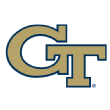
40. Georgia Tech Yellow Jackets
Give lots of credit to a Yellow Jackets team that just posted the program’s first back-to-back winning seasons in the ACC since 1989-90. There aren’t many players in the country playing better than senior forward Moses Wright, who is averaging 20.2 points and 11 rebounds over his past four contests.

41. BYU Cougars
Beware of experienced teams like the Cougars in the NCAA tournament. Mark Pope has three seniors who play major minutes — guards Alex Barcello and Brandon Averette along with big man Matt Haarms — and you should not expect BYU to go quietly. This team really shoots the basketball and protects the rim as well as anyone in the game.
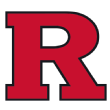
42. Rutgers Scarlet Knights
It will be a shock if the Scarlet Knights don’t make the NCAA tournament, but a win or two in the Big Ten tournament could do wonders for a group that is 3-4 over its past seven games, including a troubling blowout loss at Nebraska. This is a veteran group, and coach Steve Pikiell needs seniors Jacob Young and Geo Baker to take control.

43. Clemson Tigers
The Tigers have quietly won six of their past seven as the ACC tournament begins. Senior forward Aamir Simms is rightfully going to get a lion’s share of the attention from Clemson’s ACC and NCAA tournament opponents, but it is sophomore guard Al-Amir Dawes who has really galvanized Brad Brownell’s team. Dawes is 12-of-17 from 3 in his past three games, and dished out a season-high five assists in Saturday’s win over Pitt.

44. Xavier Musketeers
The season-ending injury to Nate Johnson has really hurt a Musketeers team that is 1-3 without him, but maybe this XU team has a similar kind of run in it as the program made in 2017. You’ll remember that the Musketeers lost six straight games late and were left for dead when star Edmond Sumner got hurt and was lost for the year, only to get hot when it mattered and march all the way to the Elite Eight.
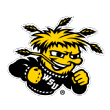
45. Wichita State Shockers
Isaac Brown has had one of the remarkable coaching jobs in college basketball this season, leading the Shockers to the No. 1 seed in the AAC tournament in what looked like it could be a lost season. Sophomore guard Tyson Etienne has been outstanding over the past month, combining with UConn transfer Alterique Gilbert in a dangerous backcourt.

46. Drake Bulldogs
This is a worthy NCAA tournament team, one that gave Loyola Chicago all it could handle in the Missouri Valley final despite being depleted by injuries. Point guard Roman Penn is out for the year with a broken foot but coach Darian DeVries could get leading scorer ShanQuan Hemphill (foot) back after he was forced to miss the past nine games.

47. Syracuse Orange
Maybe this isn’t one of Jim Boeheim’s best teams, but would you want to play them in the NCAA tournament? (You would not). The Orange earned nice back-to-back wins over Clemson and North Carolina because you have to make shots against the Syracuse zone and the Tigers and Tar Heels didn’t (a combined 14-for-49 from 3).

48. Boise State Broncos
The Broncos are part of a really strong group at the top of the Mountain West, and a team more than capable of winning the conference tournament. Senior forward Derrick Alston has been excellent this season but has to find his stroke — he’s just 2-of-17 from 3-point range in his past two games (both losses) and needs to get hot.

49. Utah State Aggies
This is not the vintage Aggies team that rode Sam Merrill to 26 wins last season, but it’s a well-coached and fundamentally sound group that has one excellent piece in the middle in the form of center Neemias Queta. The 7-footer is really tough to move down low and is top-five in the country in block percentage — a true rim-protector.

50. Memphis Tigers
Penny Hardaway and Co. played really well against Houston on Sunday only to have their hearts broken on a Tramon Mark prayer at the buzzer. The Tigers will need to make a run in the AAC tournament and are more than capable of doing that — they’d won six straight and nine of their past 10 entering Sunday’s game with the Cougars.

51. Saint Louis Billikens
The Billikens, who were handled by St. Bonaventure in the A-10 semifinals, have not been quite the same team since going on a one-month-plus COVID-related hiatus between Dec. 23 and Jan. 26. SLU is just 7-5 during that time but does have a win over the Bonnies, who are safely in the field, over that stretch.

52. Colorado State Rams
This is a really well-coached team under Niko Medved, but don’t discount the talent the Rams have, either. David Roddy, the 6-5, 250-pounder, has been great on the boards (double-doubles in four of his past five games) but can also step out and make a 3 when needed. The Rams are tough.

53. Belmont Bruins
With the loss to Morehead State, does Belmont get in? The Bruins are very good, but there are not enough quality wins to make the cut without the eye test being used. The problem is, the eye test is usually reserved for evaluating play in close losses, rather than using basketball judgment to say how good a team is relative to teams that have played tougher schedules.

54. Toledo Rockets
The Mid-American Conference tournament tips off Thursday in Cleveland, and should be a joy to watch given how many quality teams will partake in the eight-team field. Toledo has been the most consistent of the group, and it would be unwise to bet against a heady senior guard like Marreon Jackson (17.6 points, 6.3 rebounds, 6.1 assists) to cut down the nets.

55. Seton Hall Pirates
The Pirates have placed themselves in peril of missing the NCAA tournament during their current four-game winning streak, but there’s no reason why this team can’t go on a run at Madison Square Garden this week. The two bigs, 6-11 Sandro Mamukelashvili and 7-2 Ike Obiagu, are a difficult matchup for any team they’ll face in the Big East tournament.

56. SMU Mustangs
We still don’t know much about a Mustangs team that has played only 15 games, including 11 in American Athletic Conference play, due to COVID-19 issues that have kept them off the floor for more than a month. But if they can shake off the rust, SMU will have a chance to demonstrate that it is a really talented group led by one of the nation’s underrated point guards in Kendric Davis.

57. Duke Blue Devils
Duke probably isn’t making the NCAA tournament but should feel really good about the maturation of Mark Williams, one of the most improved players in college basketball over the past month. The 7-footer has averaged 16 points over his past four games and can be a foundational piece on next year’s Blue Devils squad.

58. Indiana Hoosiers
The Hoosiers aren’t reaching the NCAA tournament unless they go on a run in the Big Ten tournament, but don’t discount the ability of a team that swept a home-and-home with Iowa to get hot when it matters. Trayce Jackson-Davis is terrific but needs help, and IU has to take better shots — it went 7-for-43 from 3-point range over its past two games combined.

59. Winthrop Eagles
The champs of the Big South are going to be a mystery team in most brackets, but let The Bilastrator fill you in — this is a really good team. The Eagles are experienced, they make good decisions, they share the basketball and they’re peaking. Winthrop won its three Big South tournament games by a combined 77 points.

60. Stanford Cardinal
The Cardinal have to get to work in the Pac-12 tournament, and the talent is there for them to make a run. When Oscar da Silva — who has missed the past three games with a foot injury — is healthy, this is one of the toughest matchups in the league. The team also needs freshman phenom Ziaire Williams to play his best basketball.
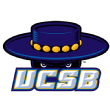
61. UC Santa Barbara Gauchos
The Gauchos won 15 of their past 16 to earn the regular-season title in the Big West. They have two really good players in point guard JaQuori McLaughlin and big man Amadou Sow. The big question is whether they can get by traditional conference heavyweight UC Irvine, which swept them in a two-game set in Irvine way back on Dec. 27-28.

62. Richmond Spiders
The Spiders have suffered from some rough luck this season, losing Nick Sherod before the season started with a knee injury and top scorer Blake Francis to a back issue in the Atlantic 10 tournament. The win over Kentucky got the world’s attention in November, but it’s probably the win over Loyola Chicago that has held up the best.

63. Ole Miss Rebels
Ole Miss has done what it needed to do to stay in the NCAA tournament conversation, winning seven of its last nine. It needs to keep it rolling in the SEC tournament in Nashville this week. The thing Kermit Davis’ team probably does the best is rebound — it has the most offensive rebounds in SEC play and allows the fewest.

64. NC State Wolfpack
Give a lot of credit to the Wolfpack for not folding the tents when leading scorer Devon Daniels was lost for the season with a knee injury in late January. The Wolfpack have won five in a row as the ACC tournament commences this week — one of those victories was over conference champ Virginia — and freshman point guard Cam Hayes (10.7 and 3.8 assists per game during the win streak) has matured rapidly.

65. St. John’s Red Storm
You’d better believe this team can do some damage on its usual home floor at Madison Square Garden this week. The Red Storm are 9-3 over their past 12 games, with wins over Villanova, UConn, Seton Hall and Providence. Their up-tempo style is tough to face in a setting where everyone is playing on back-to-back days. Having a healthy point guard in Posh Alexander (sprained thumb) would help.

66. Wright State Raiders
Milwaukee broke the Raiders’ hearts with an epic comeback in the Horizon League tournament, but don’t let that diminish the accomplishments of the conference co-champs. Senior center Loudon Love (16.6 points, 10.1 rebounds) was a force for a team that would have been a difficult matchup in the NCAA tournament.
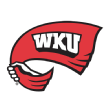
67. Western Kentucky Hilltoppers
The Hilltoppers won’t have it easy as they try to emerge with the Conference USA tournament title this week, but they have an advantage no other C-USA team has: Charles Bassey. The Wooden Award finalist has been a double-double machine and also ranks among the nation’s leaders in blocks. A true rim protector.

68. Davidson Wildcats
Davidson probably won’t play in the NCAA tournament, so if this is the last time we see Kellan Grady, we should salute him. Grady has been a consistent 17-point per game scorer for all four years at Davidson — he stands at 1,990 career points — and has contributed to 73 wins over that stretch for Bob McKillop’s team.
